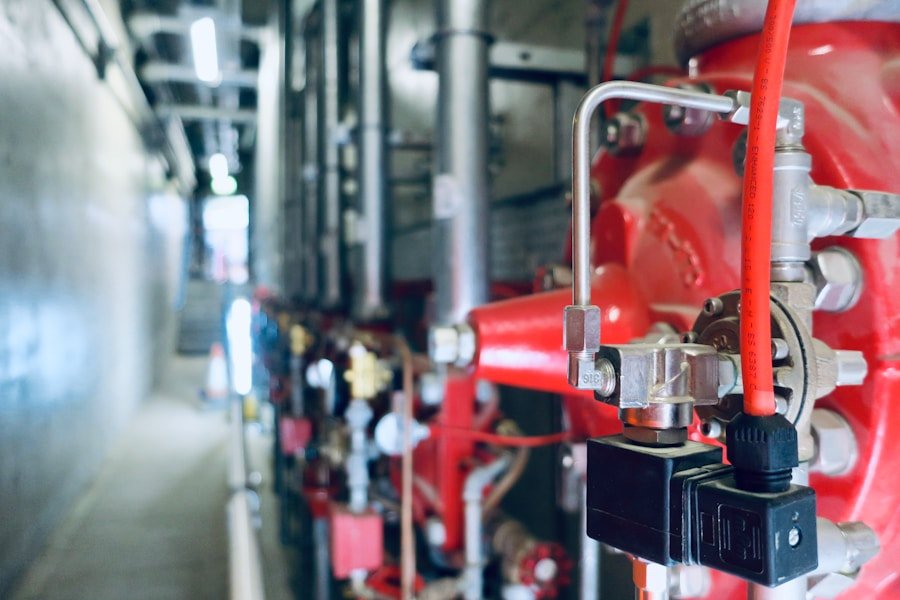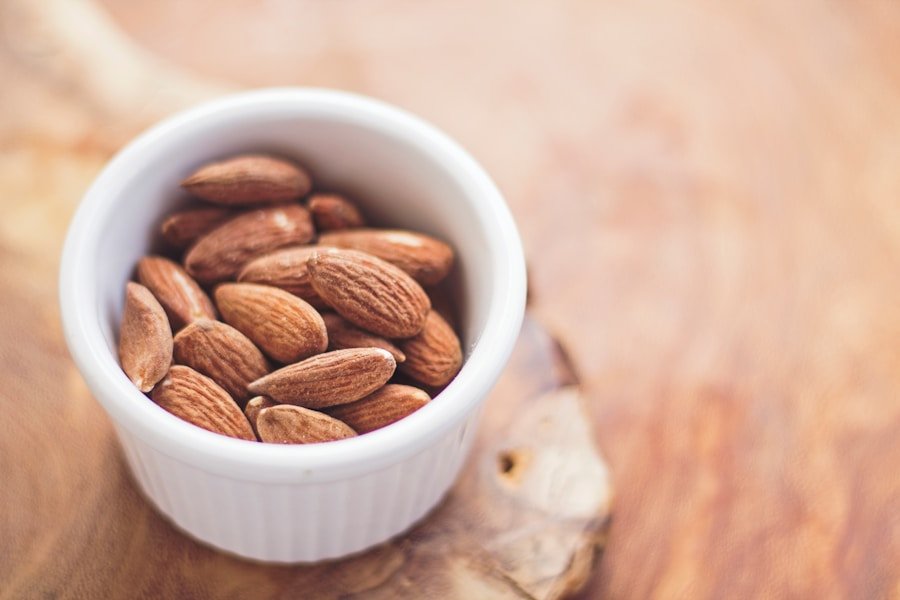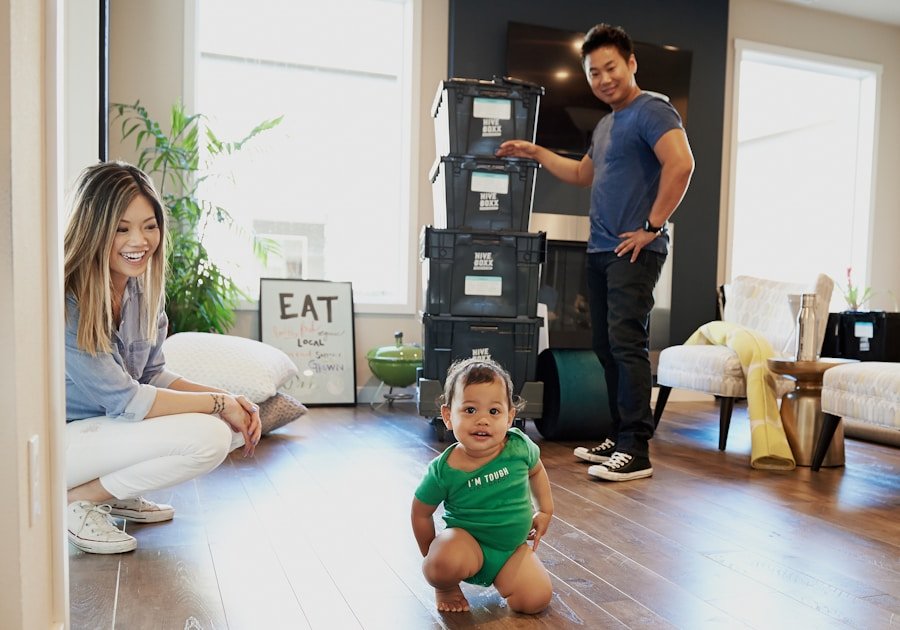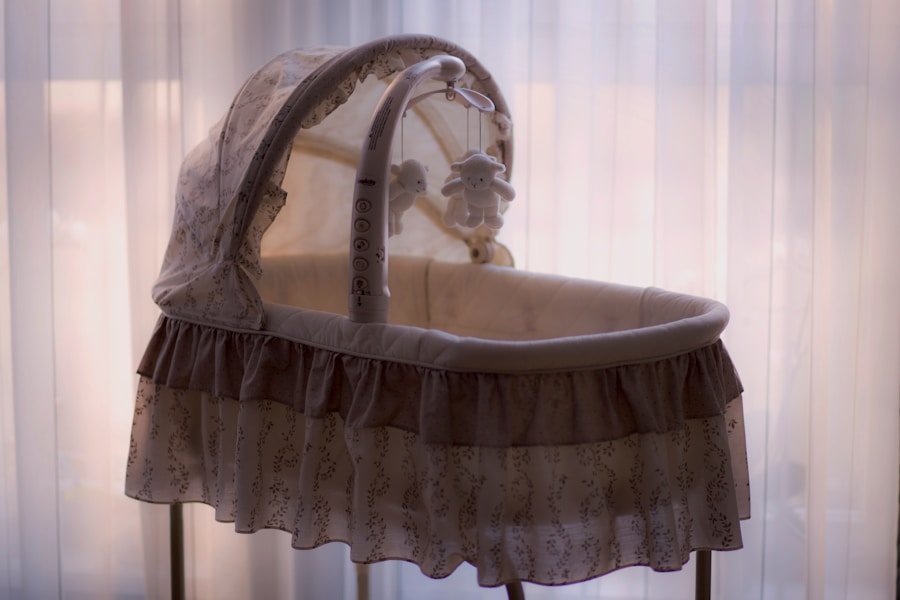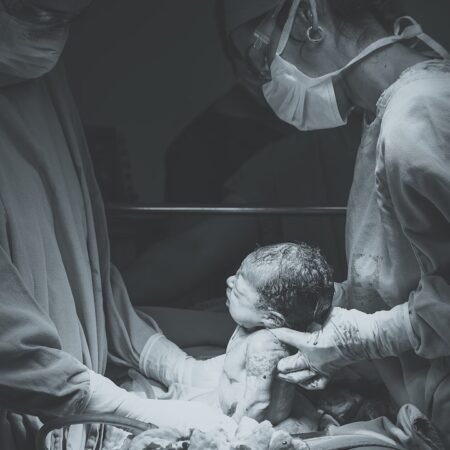When it comes to choosing a crib for your baby, safety should be the number one priority. There are several key safety features that first-time parents should look for when selecting a crib. One of the most important features is the presence of fixed sides on the crib.
This ensures that the sides cannot be lowered, reducing the risk of entrapment or suffocation. Additionally, parents should look for cribs that have slats that are no more than 2 3/8 inches apart to prevent the baby from getting stuck between them. Another important safety feature to consider is the sturdiness of the crib.
It’s essential to choose a crib that is well-constructed and made from durable materials to ensure that it can withstand the weight and activity of a growing baby. Look for cribs that have strong hardware and secure fastenings to prevent the crib from collapsing or becoming unstable. Additionally, it’s important to ensure that the crib meets all current safety standards and regulations, such as those set by the Consumer Product Safety Commission (CPSC) in the United States.
Key Takeaways
- Look for cribs with adjustable mattress heights and sturdy construction to ensure safety for your baby.
- Consider the size of the crib to fit comfortably in your nursery and the style that complements your decor.
- Choose a firm and breathable mattress that fits snugly in the crib to reduce the risk of SIDS.
- Opt for cribs made of non-toxic materials and sturdy construction for durability and safety.
- Set a budget for the crib and consider long-term versatility and convertibility options for growing infants.
Choosing the Right Size and Style of Crib for Your Baby
When choosing a crib for your baby, it’s important to consider the size and style that will best suit your needs and preferences. There are several different types of cribs available, including standard cribs, convertible cribs, and portable cribs. Standard cribs are the most common type and are designed to be used from infancy through toddlerhood.
Convertible cribs, on the other hand, can be transformed into a toddler bed, daybed, or even a full-size bed as the child grows. Portable cribs are smaller and more lightweight, making them ideal for travel or small spaces. In addition to considering the type of crib, parents should also think about the size and style that will work best in their nursery.
Measure the space where the crib will be placed to ensure that it will fit comfortably without overcrowding the room. Consider the overall aesthetic of the nursery and choose a crib that complements the decor and style of the space. Some cribs come in a variety of finishes and designs, so take the time to find one that matches your personal taste and preferences.
Factors to Consider When Selecting a Mattress for the Crib
The mattress is another crucial component of a baby’s crib, and there are several factors to consider when selecting the right one. First and foremost, it’s important to choose a mattress that fits snugly within the crib frame with no gaps or spaces around the edges. This will help prevent the baby from getting trapped between the mattress and the sides of the crib.
Additionally, look for a mattress that is firm and supportive to reduce the risk of suffocation or Sudden Infant Death Syndrome (SIDS). Another important consideration when choosing a crib mattress is the material it is made from. Organic mattresses are becoming increasingly popular among parents who want to minimize their baby’s exposure to chemicals and toxins.
These mattresses are made from natural materials such as organic cotton, wool, or latex, and are free from harmful flame retardants and other chemicals. While organic mattresses may be more expensive than traditional options, many parents feel that the peace of mind and health benefits they provide are well worth the investment.
Understanding the Importance of Material and Construction in a Crib
| Consideration | Description |
|---|---|
| Safety | Ensure the crib meets safety standards and has no sharp edges or small parts that could pose a choking hazard. |
| Size | Choose a crib that fits comfortably in the nursery and allows for easy access to the baby. |
| Material | Opt for non-toxic materials and finishes to avoid potential health risks for the baby. |
| Adjustability | Consider a crib with adjustable mattress heights to accommodate the baby’s growth and development. |
| Conversion | Look for cribs that can be converted into toddler beds or daybeds to extend their usefulness. |
| Cost | Set a budget and compare prices to find a crib that meets your needs without overspending. |
The material and construction of a crib play a significant role in its safety, durability, and overall quality. When choosing a crib for your baby, it’s important to consider the materials used in its construction. Look for cribs made from solid wood or metal, as these materials are known for their strength and longevity.
Avoid cribs made from particleboard or MDF, as these materials are less durable and may contain harmful chemicals. In addition to considering the materials used in the crib’s construction, it’s also important to pay attention to the overall design and build quality of the crib. Look for cribs with smooth edges and corners to reduce the risk of injury, as well as secure hardware and fastenings that will keep the crib stable and secure.
It’s also a good idea to choose a crib from a reputable manufacturer with a history of producing high-quality, safe products for infants.
Budgeting and Cost Considerations for First-Time Parents
For many first-time parents, budgeting is a significant consideration when choosing a crib for their baby. Cribs can vary widely in price, with some models costing several hundred dollars or more. When setting a budget for a crib, it’s essential to consider not only the initial cost of the crib but also any additional expenses such as a mattress, bedding, and accessories.
Keep in mind that while it may be tempting to opt for a cheaper crib to save money, it’s crucial not to compromise on safety or quality. One way to save money on a crib is to look for sales, discounts, or secondhand options. Many retailers offer sales on baby furniture throughout the year, so keep an eye out for promotions that can help you save on your purchase.
Additionally, consider shopping at consignment stores or online marketplaces where you can find gently used cribs at a fraction of the cost of new ones. Just be sure to thoroughly inspect any secondhand crib for signs of wear or damage before making a purchase.
Tips for Setting Up and Maintaining a Safe Sleeping Environment for Your Baby
Once you’ve chosen a crib for your baby, it’s essential to set up and maintain a safe sleeping environment to reduce the risk of accidents or injuries. Start by assembling the crib according to the manufacturer’s instructions, ensuring that all hardware is securely fastened and that there are no loose or broken parts. Once the crib is set up, position it away from windows, blinds, cords, or other potential hazards that could pose a risk to your baby.
When it comes to bedding for your baby’s crib, it’s important to keep it simple and safe. Use a fitted sheet specifically designed for crib mattresses, and avoid using any additional bedding such as blankets, pillows, or stuffed animals. These items can increase the risk of suffocation or SIDS and should not be placed in the crib with your baby.
Additionally, make sure that any mobiles or hanging toys are securely attached and out of reach of your baby to prevent them from becoming loose or falling into the crib.
Long-Term Versatility and Convertibility of Crib Options for Growing Infants
As your baby grows, their needs will change, and it’s essential to choose a crib that can adapt to these changes over time. Convertible cribs are an excellent option for parents who want a long-term solution that can grow with their child. These cribs can be transformed into toddler beds, daybeds, or even full-size beds with the use of conversion kits, allowing them to be used well into childhood and beyond.
When selecting a convertible crib, consider the different conversion options available and choose one that best suits your needs and preferences. Some convertible cribs come with conversion kits included, while others require separate purchases. Additionally, consider the overall design and style of the crib to ensure that it will transition seamlessly into its new form as your child grows older.
By choosing a versatile and convertible crib, you can save money in the long run by avoiding the need to purchase additional beds as your child outgrows their crib. In conclusion, choosing a crib for your baby is an important decision that requires careful consideration of several key factors. Safety should always be the top priority when selecting a crib, so be sure to look for features such as fixed sides, sturdy construction, and adherence to current safety standards.
Additionally, consider the size, style, mattress, material, budget, setup tips, and long-term versatility of different crib options before making your final decision. By taking the time to research and evaluate these factors, you can ensure that you choose a crib that provides a safe and comfortable sleeping environment for your baby while also meeting your needs as first-time parents.
FAQs
What are the safety standards for cribs?
The safety standards for cribs are set by the Consumer Product Safety Commission (CPSC) in the United States. These standards include requirements for crib slat spacing, mattress fit, and overall crib construction to ensure the safety of the baby.
What should parents look for in a crib?
Parents should look for a crib that meets the current safety standards, has a sturdy construction, and has adjustable mattress heights. They should also consider the size of the crib, the style, and any additional features such as teething rails or convertible options.
What are the different types of cribs available?
There are various types of cribs available, including standard cribs, convertible cribs, portable cribs, and mini cribs. Each type has its own set of features and benefits, so parents should consider their specific needs and space constraints when choosing a crib.
What should parents consider in terms of crib mattress?
Parents should ensure that the crib mattress fits snugly in the crib with no gaps, is firm and supportive, and is made of breathable materials. They should also consider the mattress height adjustments and any waterproof or hypoallergenic features.
Are there any additional safety tips for using a crib?
Parents should avoid using crib bumpers, pillows, and loose bedding in the crib to reduce the risk of suffocation or Sudden Infant Death Syndrome (SIDS). They should also regularly check the crib for any loose or broken parts and follow the manufacturer’s assembly and usage instructions.



